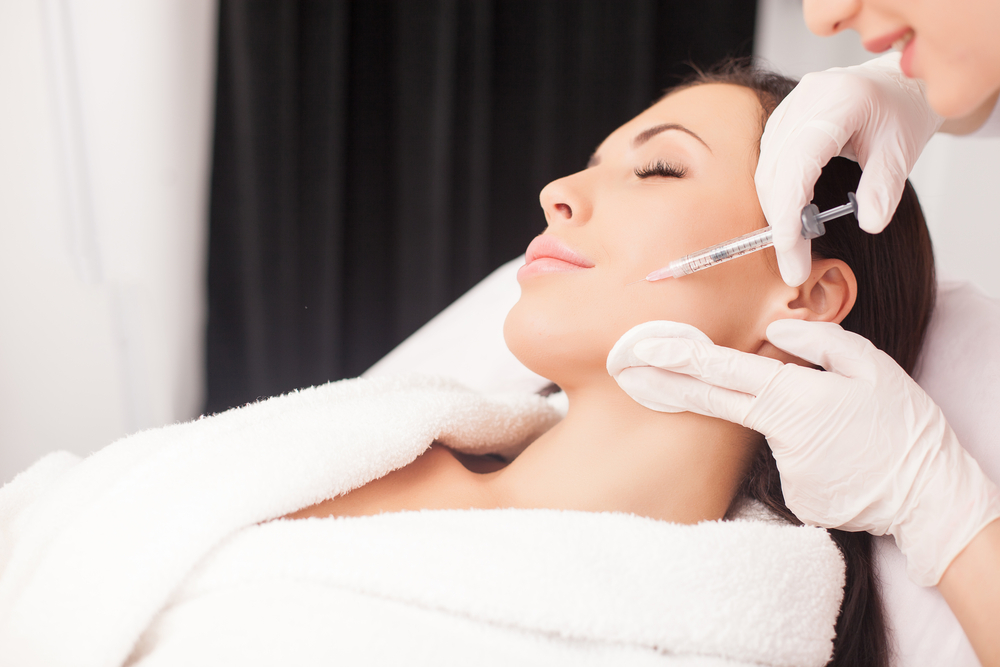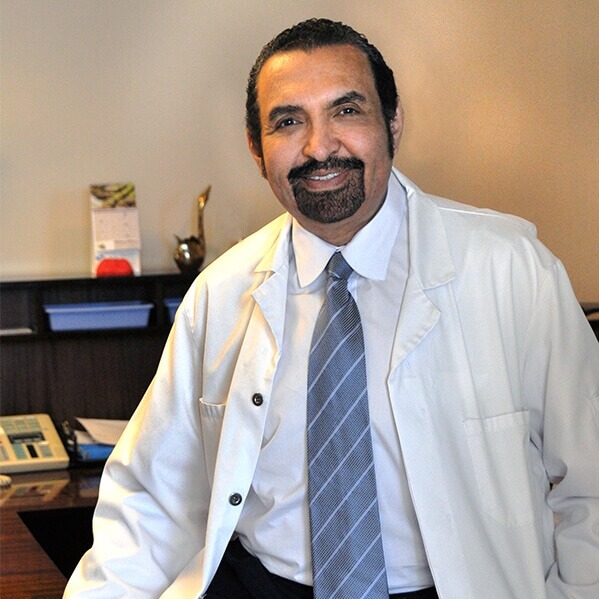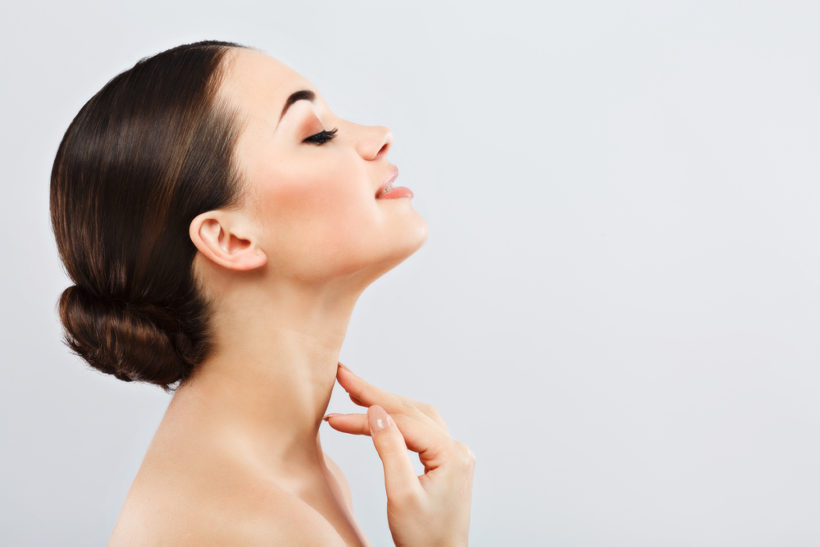
The botox injection
Patients are often confused about what the Botox injection actually is.
What is the procedure? Is it dangerous? Is it painful?
Botox is known by the scientific name of botulinum toxin.
Botox injection is an anti-aging cosmetic treatment to reduce facial expression wrinkles.
This is most effective against the wrinkles around the eyes (ex: crow’s feet) and the vertical lines between the eyebrows.


The composition
Botox is the commercial name of Botulinum toxin type A. It is a purified form of the toxin secreted by the bacterium clostridium botulinum. Once injected into a muscle, it relaxes it and decreases the undesirable wrinkles secondary to facial expression movements.

The result?
The result of Botox varies, from one session to another, between an excellent to a weak result. Resistance to Botox can also happen.
Botox has a beneficial, but not magical effect. Your look will improve, but not in a radical way. You will not look much younger. However, because the angry expression is attenuated, you will look more relaxed, with a serene expression. Therefore, people perceive you as more approachable and friendly. The way you are perceived by other people has enormous impact on the way they treat you and trust you. In other way, correcting your false expression has a double beneficial effect on both your looks and your social success.
The dose?
The injected dose of Botox to reduce expression lines, in general, varies between 15 and 50 units per area of injection.

Its action and indications?
Botox blocks the transmission of nerves that activate the expression muscles, such as those around the eyes and between the eyebrows.
This leads to a relaxation effect of these muscles and to a reduction of folds and transitional wrinkles associated with smiling, serious or angry expressions.
Also, the relaxation of these muscles increases the action of the large frontalis muscle of the forehead that is located above the eyebrows. This causes a slight elevation of the eyebrows and a brighter look.
Botox has also another unusual indication: abundant sweating. This is a condition that causes severe embarrassment for an individual. It leads to wet clothing in the area of the underarms, often noticeable by other people. Excessive sweating can also be a problem in intimate relationships, possibly causing the partner to be turned off, or the affected person to feel rejected and to lose self-esteem. To use Botox in the armpits, the doctor has to locate the exact area responsible for the abnormal sweating. Then, few units of Botox are used in each of many spots across the armpits. Some patients need a larger number of Botox units than others. As well, the frequency needed for the repeated Botox sessions may vary between 3 to 5 months in terms of intervals.
Another interesting area for Botox use is the neck. As we age, some of us tend to develop prominent vertical folds on both sides of the midline of the neck, called ‘‘platysma folds’’. These represent the drooping of the tense edges of a large neck muscle called ‘‘Platysma’’, that lies underneath the cervical skin. Injecting these droopy borders of the platysma leads to their relaxation and renders them less visible. Also, injecting the ‘‘plasma’’ muscle in the upper neck, underneath the mandible, can increase the definition and youthful look of this area. This effect is often nicknamed the ‘Nefertiti look’, referring to the superbly attractive Egyptian queen known for her beautiful neck and exotic facial definition and contours.
Call us for an appointment
514-935-5033

The course?
After the disinfection of the skin, the injection sites are marked.
There is a minimal discomfort during the Botox session.
The action of Botox appears within three days to a week.
The effect of Botox is usually maintained for almost 4-6 months and gradually dissipates.
So, scheduling a session of Botox every 5 months is ideal.
As the Botox injections are repeated, the expression muscles begin to atrophy and to thin out, which ultimately enhances the long-term effect of Botox.
The risk of botox injection: is it a poison?
For the Botox injection to turn into a poison, it would have to be injected in almost tens of times the regular dose!
The usual Botox dose used is too low to cause a serious complication like botulism.
In 2-3% of cases, Botox can cause ptosis (weakness) of the upper eyelid for a few weeks. This always ends up returning to normal.
The bruises?
For the majority of patients who undergo a Botox injection, bruises are not obvious and are usually minimal after the injection.

The other procedures?
Botox is very commonly combined with filler injections. The most popular combination is to have Botox given around the eyes, and fillers injected in the lips and wrinkles above and below them (the nasolabial folds and the marionette lines).
Botox has recently been combined with the latest generation of forehead lifts. There are basically two types of classical forehead lifts (also called ‘brow lifts’): the long-incision coronal approach and the shorter incisions ‘endoscopic’ approach. One of the traditional steps of these two approaches is the removal (resection) of the muscles responsible for the wrinkles in the glabellar region between the brows, mainly the corrugator muscles, the procerus muscle and the supercillii muscles. These muscles are called “brow depressors” because, when they contract, they pull down the brows. Therefore, by removing these muscles during the traditional forehead lift, the brows stay up, thus improving the effect of the forehead lift and fulfilling its goal. However, in some recent modifications of the forehead lift, like the «0.0.3» forehead lift introduced and taught by Dr. Fanous, the depressor muscles are neither cut nor removed. Instead, Botox is injected into these muscles before and after the procedure to weaken them. This Botox approach to forehead lift has the advantage of avoiding the asymmetrical expressions that may arise as a complication of cutting or ablating these muscles.
Botox, as well, is often combined with peels, lasers and facelifts to enhance the rejuvenating effect of these procedures.
Botox injection Montreal – Call us at 514-935-5033

The cost?
If you want to know how much the price of a Botox injection is, and how much it costs, contact us by phone at 514-935-5033 or by email to get an approximate fees margin.
Your questions about botox injection?
Contact us by phone at 514-935-5033 or by email today for answers to all your remaining questions (Montreal).
You have a question?
Ask Doctor Fanous








